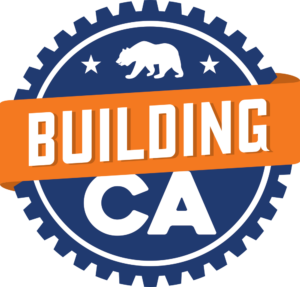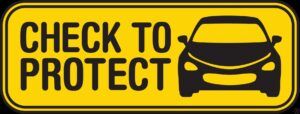
Winter in California can vary from sunshine to rain, wind and snow. From the wintery deserts to high Sierra to the packed freeways, the California Office of Traffic Safety (OTS) reminds you that winter brings its own special road safety and travel preparation lists.
Safety First and Always
- Buckle Up. Every Trip. Every Time.
- Always plan ahead, use a Designated Sober Driver.
- Don’t text or talk on your cell phone while driving – even hands-free. If you need to make a call, check road or weather conditions or respond to a text, wait until you stop in safe place, such as a rest stop or parking lot.
- Carry an emergency kit. You can build your own with tips found at https://www.ots.ca.gov/ots-and-traffic-safety/traffic-safety-tips/roadside-emergency-kit/.
- Share the driving with other passengers to avoid fatigue.
- Schedule trips to allow for frequent breaks. Take time to pull over at rest stops to stretch your legs and focus your head.
- Don’t fall into the trap of driving while angry – aggressive driving kills.
Driving in Rain
- Before it starts to rain, replace old or brittle wiper blades.
- Stay toward the middle lanes – water tends to pool in outside lanes.
- Maintain proper following distance (3 second rule). This needs to be increased in wet weather.
- Be more alert watching for brake lights in front of you. Avoid using your brakes; if possible, take your foot off the accelerator to slow down.
- Turn your headlights on in a light rain and in gloomy, foggy, or overcast conditions to help you see the road and help other drivers see you.
- Never drive beyond the limits of visibility. The glare of oncoming lights, amplified by the rain on the windshield, can cause temporary loss of visibility while substantially increasing driver fatigue.
- Never drive through moving water if you can’t see the ground through it; your vehicle could be swept off the road.
- Avoid driving through deep water, because it can cause serious damage to a modern vehicle’s electrical system.
- When you need to stop or slow, do not brake hard or lock the wheels and risk a skid. Maintain mild pressure on the brake pedal.
- Watch out for places where floodwater collects, particularly low-lying roads adjacent to streams, and dips under rail or highway bridges.
- Never use cruise control on wet roads or icy road conditions. Cruise control can cause skidding and loss of tire traction on wet or icy roads.
- Don’t drive with your windows frosted or fogged up. Wait until they clear before leaving home. A quick way to de-fog your windows is to open a window to let cool air in.
- “Hydroplaning” happens when heavy rain and fast speeds lead to your vehicle riding on top of a thin layer of water, a dangerous situation that can lead to uncontrolled skidding or drifting out of the lane. If you find yourself hydroplaning or skidding:
- Do not brake or turn suddenly. Ease your foot off the gas until the vehicle slows and you can feel traction on the road again.
- Turn your steering wheel in the direction of the skid. As you recover control, gently straighten the wheels.
- If you need to brake, do it gently with light pumping action. Your vehicle has anti-lock brakes, then brake normally. Because the vehicle’s computer will mimic a pumping action.
Before Heading for Snow Country
- Make sure your brakes, windshield wipers, defroster, heater and exhaust system are in top condition. Check your tires. Make sure they are properly inflated and the tread is in good condition.
- Check your antifreeze and be ready for colder temperatures.
- You may need to add concentrated windshield washer fluid to the windshield washer fluid reservoir to prevent an icy windshield.
- Always carry chains. Make sure they are the proper size for your tires, are in working order, and you have learned how to install them.
- It is also a good idea to take along water, food, warm blankets and extra clothing. A lengthy delay will make you glad you have them.
- Load the Caltrans Road Conditions phone number in your cell phone for convenient, updated road conditions – (800) 427-7623.
Driving in Snow Country
- Allow enough time. Trips can take longer during winter that other times of the year, especially if you encounter storm conditions or icy roads. Get an early start and allow plenty of time to reach your destination.
- Drive only if it is absolutely necessary. Travel in the day, don’t travel alone, and keep others informed of your schedule.
- Stay on main roads; avoid back road shortcuts.
- Keep your gas tank full. It may be necessary to change routes or turn back during a bad storm or you may be caught in a traffic delay.
- Keep windshield and windows clear. You may want to stop at a safe turnout to use a snow brush or scraper. Use the car defroster and a clean cloth to keep the windows free of fog.
- Slow down. A highway speed of 65 miles per hour may be safe in dry weather, but an invitation for trouble on snow and ice. Snow and ice make stopping distances much longer, so keep your seat belt buckled and leave more distance between your vehicle and the vehicle ahead. Bridge decks and shady spots can be icy when other areas are not. Remember to avoid sudden stops and quick direction changes.
- When stalled, stay with your vehicle and try to conserve fuel while maintaining warmth. Be alert to any possible exhaust or monoxide problems.
A little advance planning and preparation can keep you, your family and our roads safe during the winter months.
Prepared by the California Office of Traffic Safety











